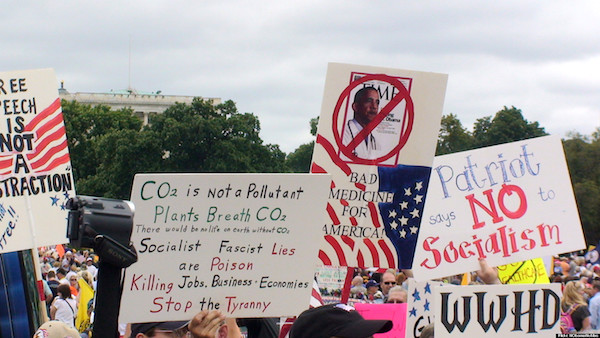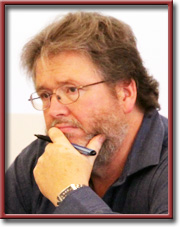Communicating The Fall
“The problem is that all the political infighting leading up to the economic future of Britain or to the next US Presidential election fades into insignificance compared to the catastrophic effects of unchecked global warming. Those effects are no longer in the future. They are present now, if only we could but see them as such, and they are accelerating. It is too late to stop or reverse climate change; our best option is to try to mitigate its effects. Unfortunately, those effects will occur on a massive, if uneven scale. Respected voices in the science community are now suggesting (though often in private) that the game is over, and that the last generation of the human species is now being born.”—William Ramp
Small Things Recollected
By William Ramp

LETHBRIDGE Alberta, Canada—(Weekly Hubris)—October 2016— Two months ago, I negotiated my way by feel to the kitchen of a darkened house. Coming upon what I was sure was the correct door opening, I stepped confidently into space. On my way down to a crunching encounter with the basement floor, I remember thinking in a detached sort of way, “Oh, this won’t end well . . .”
But now imagine that some trusted oracle had told me six months earlier that, on such and such a day, I would endure a physical catastrophe that would see me in hospital and then a care facility for six weeks? Doubtless, I would have spent the interval roiled with fear and speculation, thinking of little else.
Fear is an affect state triggered by anticipated pain or harm, whether physical, psychical, or social. The same could be said of anxiety or dread, save for one key difference. There is something definite about fear: it has an object. The object may be as immediate as a strange figure suddenly looming at your bedside, or as abstract as death, but it has some substance that renders it nameable.
Anxiety, on the other hand, is a state of fearfulness that can attach to any object or none. One can be anxious about social occasions, the state of the economy, climate change, or geopolitics without knowing what specific harms each might visit on one.
Of course, one can imagine such harms, and it should be obvious that no clear and definitive border-fence can be erected between the experience of anxiety and that of fear. But to fixate on a fear-object can also engender a strange sort of relief; it can be energizing rather than paralyzing. The catalyst for this is most often the transformation of anxiety into rage.
There is a third term useful to introduce at this point: trauma. If the 1950s were the age of anxiety, today trauma haunts the discourse of clinical psychology and cultural commentary. Cutting through the various definitions in the literature, I would propose that trauma is an experience of fear, pain, or loss that leaves a lasting effect, often predisposing a person to reactive or compensating behaviors, to long-term anxiety, to dissociation, to depression, to passivity, or to sudden, explosive rage.
Trauma has specific and universal dimensions. Beyond all the definitional controversies, psychoanalysis should have taught us, at least, that children negotiate worlds that are frightening despite parents’ best efforts to insulate them; that adults often carry childhood traumas forward, and that self-conscious human personhood of the most ordinary type necessarily involves loss and separation. (For those who can get past the fixations of creationism, this is the message of Genesis—a mythic chronicle of the human “fall” into self-conscious awareness). Trauma inhabits the everyday as well as the extraordinary.
It is also important to recognize, though the individualism of North American culture obscures it, that fear, anxiety, trauma, and depression all have social and cultural as well as personal dimensions. We do not and cannot become self-conscious individuals outside of a social matrix. And affect-states can be communicated and shared.
This is where a social and cultural perspective on emotions and their underlying affect states is important to an understanding of the great political dilemmas of our day. Let’s take exhibit A: Demagogues & Their Followers.

There has been a mountain of commentary over the past year about the Trump campaign for the US presidency, and Nigel Farage’s successful mobilization of the Brexit vote in Britain. In both cases, the commentariat often seemed stunned and uncomprehending: “Look—he lied! Oh, there he lied again!” Neither Trump nor Farage played by the formerly-established rules of the political-journalism game. Both cheerfully ignored journalistic calls for rational argument, probity, and truth.
So did their followers. And many writers, bemused by Trump, pounced on his supporters as irrational, uneducated dupes. But that misses a key point. When Trump supporters say, “He says the things I want to say/can’t say!” they aren’t making a point about fact. The more outrageous Trump’s remarks, the more his followers love it, because he DARES. And the daring is an emotional trigger. He spits publicly in the face of the rational elites, and in so doing allows a visceral resentment in his followers to take the form of collective rage. “He says things I can’t say” doesn’t refer to the content of Trump’s utterances, but to its gestural qualities. When Trump lies, cheerfully and carelessly, he’s giving a giant middle finger to a mode of speech he holds in contempt on behalf of those who cheer him on. And to them, it FEELS good to see him do it.
The more thoughtful members of the commentariat have recognized this, and have moved on from condemnations of the irrationality and supposed stupidity of Trump and Farage followers to ask about the sources of this emotive discontent. Much ink has been spilled about a dispossessed white working-class living in rust belts. Or about fundamentalist Christians. Or rural Southerners. None of these groups encompasses the movements they supposedly make up; nor do their specific grievances form one specific ideology, class or otherwise.
Trump supporters, for example, inhabit the north as well as the south; the middle class as well as the working class. Race, rather than class, more tellingly defines a Trump supporter, but this is not quite as true of Farage’s coterie of Brexiters. What seems to be the most important commonality of all is a belief in past national glory; a belief that has little rational structure but that acts as a giant bin into which can be thrown all sorts of emotional triggers. The streets aren’t safe anymore. People don’t respect the flag. Immigrants are changing our way of life and taking our jobs. Muslims are imposing their religion on us. Political correctness means we can’t say what we feel any more.
I think that what ties these disparate complaints together is something Barbara Ehrenreich once termed a fear of falling. Good jobs have fled offshore. Since Vietnam, American military might is no longer invincible. Public services, progressively crippled since Reagan’s time, no longer provide the benefits once taken for granted. The troubles and aspirations of America’s oppressed, downtrodden, and broken are no longer insulated from neighborhoods and news. In short, those who once were privileged by or benefited from the American Century, if only as a side effect, are being exposed to its politics and to the precarity long suffered by its under-classes. They are also vulnerable to social shame, for which anger, as a form of shame-reversal, can be a potent remedy.
What’s important about this situation is that the fears felt by the demographic that supported UKIP and Farage, or the Tea Party and now Trump, are leavened by a sense of wronged entitlement. That makes political depression and passivity a less likely response than something else. There is a political gasoline here which needs only the right match to turn it into an outraged militancy. Fear, combined with the everyday traumas of precarious life in a changing political configuration, attaches to objects of capture: symbolic persons, events, or situations. Those so captivated generate, often through intermediaries and moral entrepreneurs, a collective rage. Against such a state of rageful purpose, rational argumentation is of little avail, and in fact can generate further anger, especially if the rationalists in question are perceived as elitist.
This has been the fate of public discourse about climate change, which has been captured and torn apart by the mechanisms of political polarization. Climate scientists and their rationalist defenders often cannot understand how this could come to pass. But in their reactions to denialist pseudoscience and political denigration, they too have begun to show an emotive side. Recently, there has been discussion of rising rates of depression among climate scientists. What’s also evident in the liberal silos of social media that I inhabit is another kind of rage, directed at the uneducated and ignorant. But this misses the point: denialism is not, or not only an individual mental or psychological state. It is a social phenomenon, with social causes. Science itself is both a way to produce and test knowledge, and also a social institution. And those in it are sensing a loss of prestige and entitled status.

The problem is that all the political infighting leading up to the economic future of Britain or to the next US Presidential election fades into insignificance compared to the catastrophic effects of unchecked global warming. Those effects are no longer in the future. They are present now, if only we could but see them as such, and they are accelerating. It is too late to stop or reverse climate change; our best option is to try to mitigate its effects. Unfortunately, those effects will occur on a massive, if uneven scale. Respected voices in the science community are now suggesting (though often in private) that the game is over, and that the last generation of the human species is now being born.
But how to communicate this, and to what end? Rational argumentation is not enough. Further, there is a problem of what to communicate. Should the message be one of urgent mobilization? If so, we need to communicate some clear options for collective action on a grand scale. Motivating individual choices about energy use, recycling, or reproduction is necessary but insufficient. Carefully-planned action by large public bodies, by social movements, and by large corporations acting in concert for the public good, is also necessary. But years of neo-liberalism and the consumerization of public life have attached a heavy legitimacy discount to such possibilities.
Should the message be instead that we must find ways to live out the remaining years of our species in dignified acceptance of our collective end? If so, how should we communicate that to people whose privilege is predicated on the denial of dignity to others, or to people who have never been accorded dignity as a right or even a meaningful option?
Human civilization still has vast powers, including unprecedented powers of communication. It would seem we have all the technical tools we need to become the first civilization to respond in a self-conscious way to the writing on its wall. Instead, those powers are too-often used to disseminate trivia or misdirected moral panic; messages of status-quo comfort and the dangers of the other. If they are to be used instead to combat backlash, misdirection, and denial, then the first thing that has to go is a naïve assumption that human beings, even “intelligent” ones, can be motivated by reason alone. Effective communication for the human good needs the insight of the psychological and especially the social sciences as well as the natural sciences, and also the humanities. In particular, we need to recognize the power of narrative to communicate motivation, including very, very old forms of narrative.
We imagine too often that facts are enough. This is, surprisingly, not only a fault of secular rationalism. Fundamentalists, too, read their bibles in search of “facts” with which to rationalize their moral and political conclusions and energize their actions. What both fundamentalists and many secular rationalists despise is the power of myth—even as their protestations take narrative forms that incorporate unrecognized mythological structures. I am using “myth” here in the literary and anthropological sense: not as a false and motivated statement about facts, but as a vehicle for expressing the truths and contradictions of the human condition. The writing on the wall, for example, is an evocative mythological trope. So is the Ark, and the Garden. And The Fall—of persons, civilizations, pretensions, and expectations. Myths address all the things we face: fear, greed, exploitation, revenge, selfishness, loss, longing, giving, forgiving, healing, killing.
One writer who has recognized the possibility and power of deeply-embedded forms of cultural narrative is Katherine Hayhoe, a climate scientist and evangelical Christian, who has employed elements of the Christian narrative, not to do climate science, but to energize her fellow evangelicals to support climate science and to act on its conclusions. The success of her efforts remains to be seen, but there are many other ways in which myth and narrative could be deployed against demagoguery and denial. But that opens on to a new topic, about which I might write more in future, when my injured wrists allow. After my Fall.
![]()
For Further Reading & Listening:
- Barbara Ehrenreich, Fear of Falling: The Inner Life of the Middle Class (HarperPerennial, 1990)
- CBC Ideas, “All In The Family,” Part 3. CBC Radio, 2016: http://www.cbc.ca/radio/ideas/all-in-the-family-part-3-1.3545271
- Mark Epstein, The Trauma of Everyday Life (Penguin, 2013)
- Jonathan Haidt, The Righteous Mind: Why Good People Are Divided by Politics and Religion (Pantheon, 2012)
- Katharine Hayhoe, see her web page: http://www.katharinehayhoe.com
- Jack Holmes, “Climate scientists are dealing with psychological problems,” New York Magazine, July 9, 2015: http://nymag.com/scienceofus/2015/07/climate-scientists-face-psychological-problems.html
- David A. Kessler, Capture: Unravelling the Mystery of Mental Suffering (HarperCollins, 2016)
- George Monbiot, “Civilisation ends with a shutdown of human concern. Are we there already?” The Guardian, 30 October, 2007: https://www.theguardian.com/commentisfree/2007/oct/30/comment.books
- George Monbiot, “End of an Era,” 25 June, 2012, on monbiot.com: http://www.monbiot.com/2012/06/25/end-of-an-era/
- Sarah Ahmed, The Promise of Happiness (Duke University Press, 2010)
- Lauren Berlant, Cruel Optimism (Duke University Press, 2011)
- Lauren Berlant, “Trump, or Political Emotions,” The New Inquiry, August 5, 2016: http://thenewinquiry.com/features/trump-or-political-emotions/
- Lida Maxwell, “Donald Trump’s Campaign of Feeling,” The Current Condition, July 25, 2016: http://contemporarycondition.blogspot.ca/2016/07/donald-trumps-campaign-of-feeling.html


3 Comments
Gar
The opening picture, “Make America White Again”, is photoshopped, FYI.
Elizabeth Boleman-Herring
Thank you, Gar. I’m going to leave it as is, however: it embodies the spirit if not the letter(s).
John Roberts
Thank you, William Ramp, for your words on this subject. I urge you to re-read Genesis and then re-write your essay in 250 words.